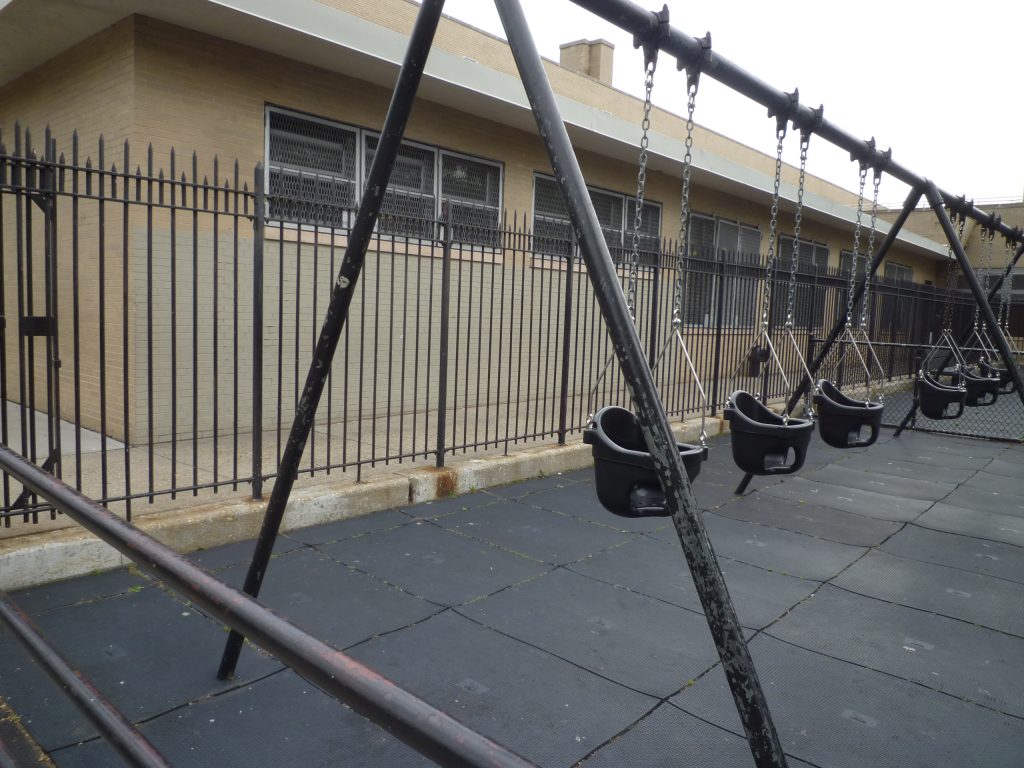I once heard a study of two groups of animals, one group were in barren cages, the other group were in the wild. Guess which group had more developed brains: the wild animals. Guess which group lived longer: the caged animals.
This confirms the old saying, if it doesn’t kill you it makes you stronger. Or in this case, if a tiger doesn’t eat you, your brain is more developed. And likewise, a life free of challenges may give you a face with less wrinkles but it does no good for your development.
Now go take a look at your average school playground.
Apart from looking menacingly close to a prison it also is a prison of the senses. It is void of anything dangerous and thus anything interesting for the mind and body to interact with. It is an evolutionary wasteland.
Certainly in terms of deaths per thousand it does great. The stats are low. Thus less law suits.
But what have we lost? What is the real price of this so called safety? I argue it is huge.
Here is a great article that makes this same argument. Titled, “The Overprotected Kid” it headlines with:
A preoccupation with safety has stripped childhood of independence, risk taking, and discovery—without making it safer. A new kind of playground points to a better solution.

As a New York green landscaper we come across this conversation a lot. Clients are very interested in creating a “safe” back garden. When we mention a water feature, instead of thinking how great an experience that would be for the kids, the client’s first comment is, “Isn’t that a drowning risk?”
The answer is yes. But I think it is a risk worth taking. Unless you are a crack head parent who doesn’t keep an ear out for your children. when they are playing outside. If you hear water and then silence then take a peek outside. Chances are your child is entranced by a tadpole rather than head first in the water. Their aren’t stupid.
Here is a photo of my back yard:

My garden is not a safe place. There are all sorts of things that can cut your skin, burn your eyes, and break your bones. It’s called nature. And it’s also a children’s wonderland. My son can climb like a monkey and run barefoot over loose boulders. There is nothing more gratifying as a father than to see my son confident in his body and with nature.

We have a bee hive and the kids play freely around it. Our two year old was obsessed with walking up to the hive and catching the bees. But we gently talked him out of it. And once he did get stung. Now he is six and a master at recognizing which bugs are safe and which bugs are dangerous. Does this skill translate to other things in life? Absolutely. Was it worth the pain of that one bee sting? Tenfold.
For me being a green builder in New York is about bringing back that wonder – we design gardens and rooftops to be diverse, both in the native species of plants and animals but also in the stimuli. We throw in a couple things that require you to, say, step over a water feature. Yes, you may slip and get your feet wet. But it also adds a sense of playfulness and “safe risk” that is crucial for a full and happy life.
I have three kids and have gotten progressively more relaxed about these things. If I found my first daughter eating dog food off the floor I would have freaked. Now, ten years and two kids later, if I were to find my third son doing that I’d just be grateful he was getting protein.
Thus went my attitude towards child gates. The other day a client told me they had spent a lot of money for a Child Safety Specialist to install baby gates on all the stairs. And a Brooklyn brownstone has a lot of them. It made me realize I had never installed gates for my third son.
I had for my first child, I sort of did for my second, but with my third I just made sure he didn’t fall down the stairs until I felt comfortable enough to let him go up and down by himself. It wasn’t because I had a plan. It was more about doing what made sense – and exposing him to a level of danger that I felt he could overcome made a lot of sense.
The results are pretty cool. He has a physical dexterity I think is very good for him. See for yourself how he makes a normal (for us) trip down the stairs. He is one and a half years old.
As a New York green builder and natural landscaper this tells me that if I suggest to my clients a more diverse, slightly less safe (within the boundaries of the child’s abilities) design option that it may improve the development of their children. That’s pretty cool.

